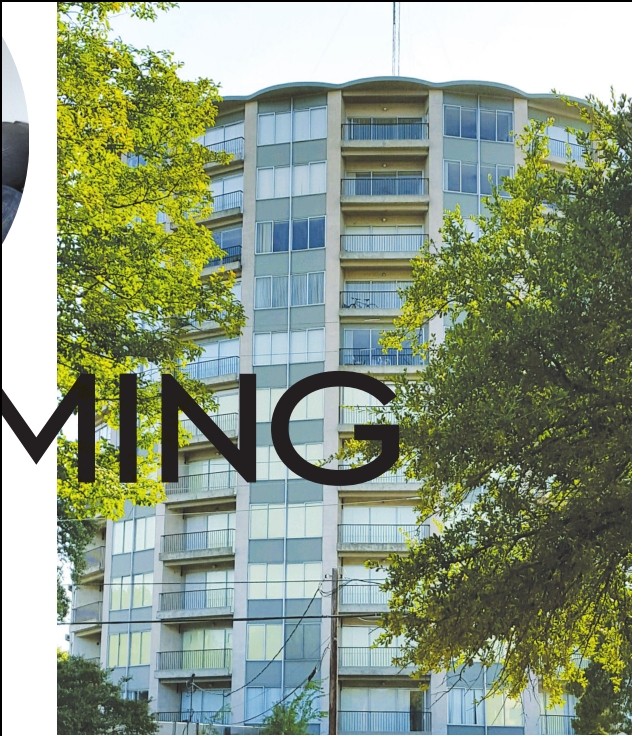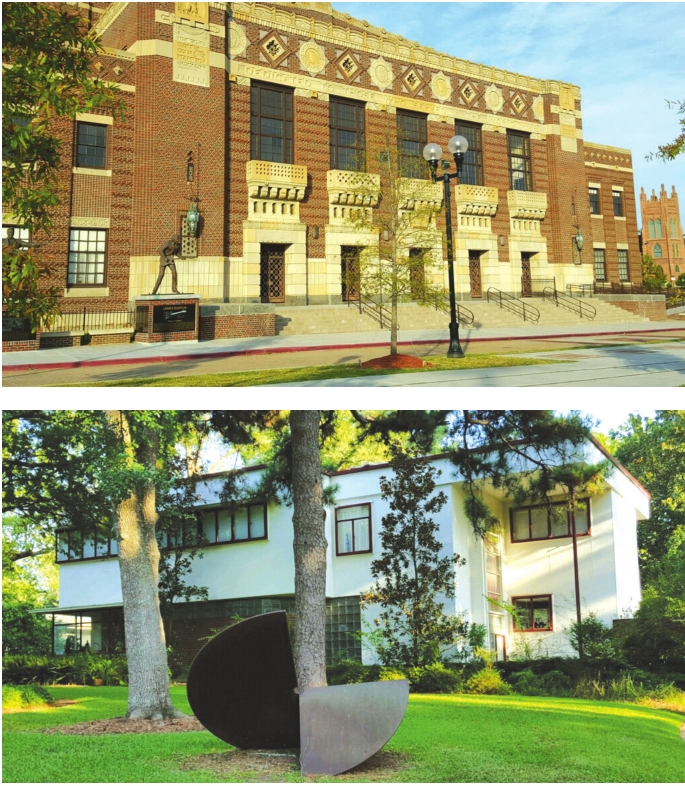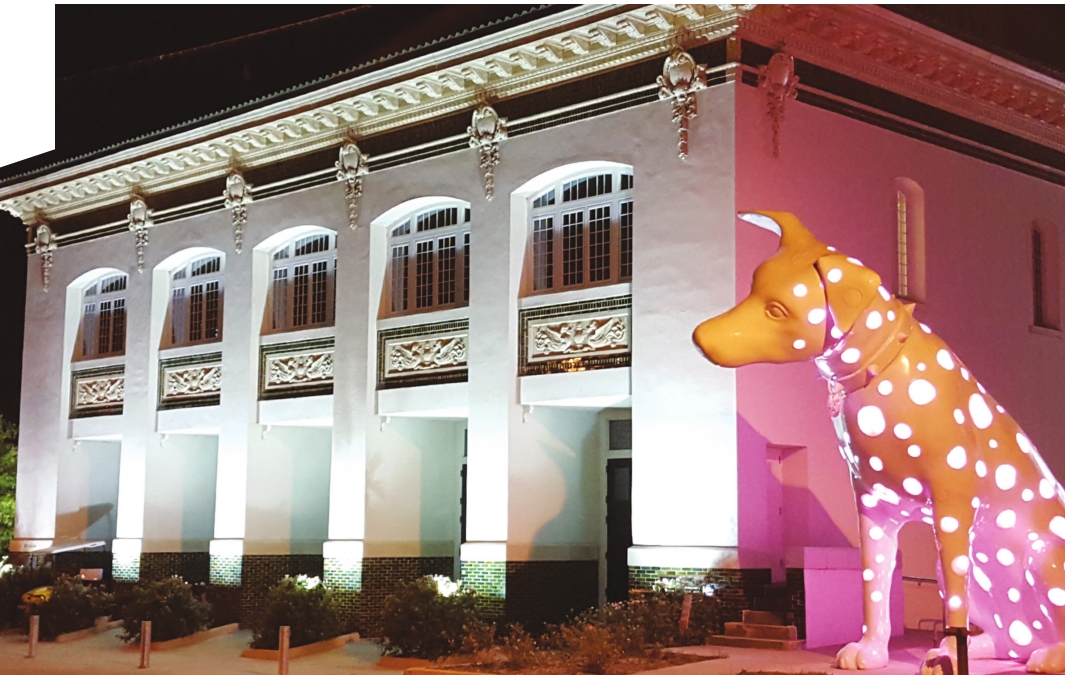Reclaiming Rooms 
Admiring the interior of our beloved city
From the 1920-70s, Shreveport might have been the most progressive city in Louisiana.
The city was a shining jewel in the South. Presidential candidates, movie stars, musicians and companies came to visit and establish themselves in the city because of the influence and prestige. Country music’s finest up-andcoming and established talents packed the Shreveport Municipal Memorial Auditorium weekly for a National Radio Program, “The Louisiana Hayride” (1948-60). The building was constructed between 1926-29 and is widely considered the best example art deco architecture in the state.
Commercial buildings and residences reflected and embraced the changing attitudes of modernist and minimalist architecture. Pioneering the way were locals, Sam and Bill Weiner, two brothers whose “international style” of architecture created some of the most iconic structures in our city, including the Municipal. Their buildings are still standouts some 60 years later. Although, in fairness, the city did lose some irreplaceable architectural buildings during this time, most notably: St. Vincent Academy (now Mall St. Vincent), blocks of mansions lining Fairfield from Olive Street north to Interstate 20, and the Herold Mansion on Stoner (now some generic mid-rise building) to name a few. But that aside, it was exciting times for our city, and Shreveport grew and prospered. Then, the ’80s hit us – hard, and the city was never the same.
Shreveport is mired in mediocrity. We now embrace sameness over individuality. With a few notable exceptions: The Cyber Innovation Center in Bossier, Sci-Port: Louisiana’s Science Center, J. Bennett Johnston Visitors’ Center on Clyde Fant and a few contemporary residences, we are mostly immersed in a pool of stucco and stone.
What happened to Shreveport? Where is the modern and progressive spirit our parents and grandparents possessed? Why does building unique neighborhoods like Highland, South Highland, Broadmoor, Pierremont and Springlake no longer interest developers? In my opinion, it is always better to stand out than blend in.
One notable exception is Provenance, which is known as a traditional neighborhood development. Take a drive to the Southern Loop and notice the different “vibe” this neighborhood provides.
In downtown Shreveport, progress is steadily being made with the Sears Building (and two adjacent ones) being renovated into lofts and retail space. This is being added to a moderately impressive list of other historic buildings, which have had new life breathed into them as residences. The Lee Hardware, United Jewelers, Ogilvie Hardware, The Salvation Army Building (Leon Dayries), Highland View (the round building on Olive/Fairfield), Novena and a sprinkling of others are helping resuscitate downtown Shreveport. They are not alone. Businesses and civic entities are also snatching up old buildings, rehabbing them and making them freshly polished jewels. Joseph Guin Salon, Kevin Bryan Architects, artspace, Central ARTSTATION, Robinson Film Center, Jeff Spikes iArchitecture, The Agora Borealis, Bayou Some Junque, Shreveport Downtown Development Authority, Philadelphia Center/Mercy Center are but a few injecting millions of collective dollars into salvaging and rehabbing historic properties.
The tide is turning. Maintaining and rehabbing our impressive list of historic buildings are vital to our success.
Get involved, play a part and be a pioneer like your grandparents were. It’s time to reclaim Shreveport.
Shreveport has some of the most attractive buildings in the state. (Clockwise from the top) Highland View, The Shreveport Municipal Memorial Auditorium, a Shreveport residence and Central ARTSATION are just some of the creativity that can be seen around the city.

